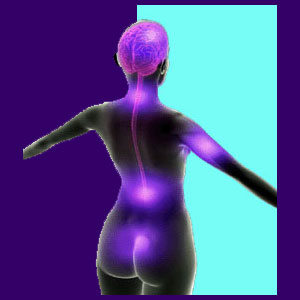
Spinal cord injury is a dreaded event which can take place from sudden trauma, disease or the slow effects of causative or contributory degenerative processes around the cord. The spinal cord is one of the most important neurological structures in the body (second only to the brain). Any damage to the cord is a matter of great concern and all patients with suspected or actual cord injuries are always advised to seek care from a qualified specialist in spinal neurology.
A spinal cord injury can have catastrophic consequences to the patient. The spinal cord is the main conduit of life energy between the body and the brain. When this cord is damaged, the nerve supply to the body might be forever altered or ended. There is no such thing as insignificant spinal cord damage.
To further complicate things, the spinal cord is known to be a very difficult area to treat for any injury, since it is so incredibly sensitive. Tissues may not regenerate, despite active care and some traumas may cause lasting impairment. Surgical interventions can often make matters worse, rather than better, sometimes escalating damage to ever more symptomatic levels.
Spine or Spinal Cord Injury?
Here is a little known fact: A person can break their neck or break their back without damaging the spinal cord. Actually, most broken backs and necks do not cause any cord or nerve injury. The spinal cord can also be damaged without the spine suffering any vertebral fractures or breaks. Cord compression, contusions and bruising can all occur from trauma or from certain structural issues or disease processes in the spinal anatomy.
It is well known that herniated discs which touch or displace the spinal cord increase the chances for spinal cord injury in certain cases, such as during car accidents and serious falls. Osteochondral bars which form effacing the cord can have a slow sawing effect, eventually causing bleeding or other type of cord damage in very rare cases. This is why it is crucial for any structural issue which influences the cord to be monitored by a physician.
The majority of spinal cord injuries do not involve the severing of the spinal cord. Partial cord injuries may produce unpredictable effects on bodily functions and systems. The spinal cord is a structure that will not normally heal from a significant injury and treatment options are extremely limited or nonexistent.
Cord Injury Topics
Cord injuries are some of the worst possible back and neck conditions. We detail the complete range of spinal cord issues in the following exploratory articles:
Demyelinating disorders prevent the spinal neurological structures from functioning correctly.
Myelopathy is another nonspecific term for cord injury.
Myelitis describes inflammation of the spinal cord.
Myelomalacia denotes spinal cord bleeding.
Hydromyelia and syringomyelia describe serious conditions where fluid enters into the spinal cord, potentially causing catastrophic injury.
Paralysis can occur due to any cord trauma and may affect virtually any or all areas of the anatomy.
Lumbar spinal cord injuries are the least physically debilitating, since they do not influence the functionality of the upper body.
Thoracic spinal cord injuries may or may not affect the use of the arms, depending on the level where they occur.
Cervical spinal cord injuries generally affect all four limbs and all the tissues below the damaged spinal level. Central cord syndrome is the most often seen variety of incomplete cervical cord trauma, particularly in elderly patients.
Spinal cord stroke is rare, but can result in terrible neurological effects or might even cause death.
Classification of Spinal Cord Injuries
Complete spinal cord injuries indicate the total loss of all feeling and function below the level of the injury. This is by far the most serious type of cord trauma and definitely influences overall patient functionality to a huge extent. True paralysis results from a total cord trauma.
Incomplete spinal cord injuries indicate that some feeling and/or function remains below the location of the injury. This type of condition is often the result of partial damage to the spinal cord. This diagnosis entails a huge range of possibilities from only mild impairments to virtually complete paralysis where only incidental feeling or functionality may be present
Tetraplegia, formerly called quadriplegia, is the loss of some or all nervous system functionality below the cervical level of injury. All four limbs will be affected, both arms and both legs, along with many autonomic functions. Complete tetraplegia is the most serious type, while incomplete or partial tetraplegia is less affective and may come in a wide range of possible levels of impairment. Diagnosed patients are called tetraplegic or quadriplegic.
Paraplegia is the condition describing a cord injury in the mid or lower back regions (thoracic, lumbar, sacral regions). The lower limbs are affected, along with possible autonomic processes. Complete paraplegia means that no feeling or function exist in the legs or anywhere below the level of injury, while partial or incomplete paraplegia means some feeling or function is left. Affected individuals are called paraplegic.
Causes of Spinal Cord Injury
Damage to the spinal cord can occur when the stability and protection of the spine is compromised. Massive trauma is usually the cause of severe cord injuries. Car accidents, falls, construction accidents, gun shots and sports injuries are the most common causes of spinal cord trauma.
Disease processes and congenital conditions can also cause damage to the spinal cord. Regardless of the cause of injury, the prognosis for recovery is usually poor, although with proper rehabilitation and re-education, the patient can learn to live a full and active life even with significant cord damage conditions.
Guidance on Spinal Cord Injury
The spinal cord is a delicate and precious structure. Years ago, an injury to the cord meant a reduced lifespan or even imminent death. Modern medicine has made great advances in the stabilization of cord injuries and the follow up care used to maintain the general health of the patient.
Products designed to assist cord injury patients have increased in their mobility and functionality.
Access for people with special needs is now the rule, rather than the exception. There is no reason why most cord injury patients can not live a healthy and rewarding life.
Unfortunately, medicine is still in the dark ages when it comes to curing and/or reversing a spinal cord injury. Most miraculous cures turn out to be actual miracles.
Medicine is rarely responsible for these few cases of recovery. Research continues and holds many promising ideas for the future.
Stem cell research might just be the break science has needed in the war against spinal cord injuries. Unfortunately, this research is being limited on the basis of moral and religious doctrine. The patients with spinal cord injuries have no other choice but to wait.





